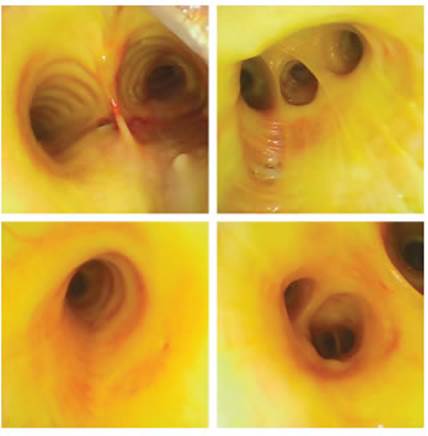A 25-year-old male patient was admitted to the ICU with septic shock and multiple organ failure. He required invasive mechanical ventilation and high-dose vasopres sors at admission. He presented a history of severe im munosuppression due to bone marrow transplant sec ondary to acute lymphoblastic leukemia. In the course of hospitalization, acute liver failure as a consequence of a disseminated varicella-zoster infection was identified.
On day 19 from the start of mechanical ventilation, he developed ventilator-associated pneumonia, prompting the performance of a bronchoalveolar lavage (BAL). Dur ing the bronchoscopic examination of the airway, it was noted that the mucosa displayed an icteric and pale ap pearance, accompanied by a subtle reddish hue, in stark contrast to the usual vibrant pink hue of healthy mucosa. These findings were consistent with an uncommon bron choscopic description called yellow bronchoscopy (Fig. 1).
It is noteworthy that the day on which the study was conducted, serum total bilirubin reached concentrations of 29 mg/dL, with direct bilirubin of 21 mg/dL. In addition, the patient had mild jaundice in the skin and sclerae. BAL fluid cultures revealed the presence of Stenotrophomon as maltophilia, an increasingly important nosocomial pathogen.















